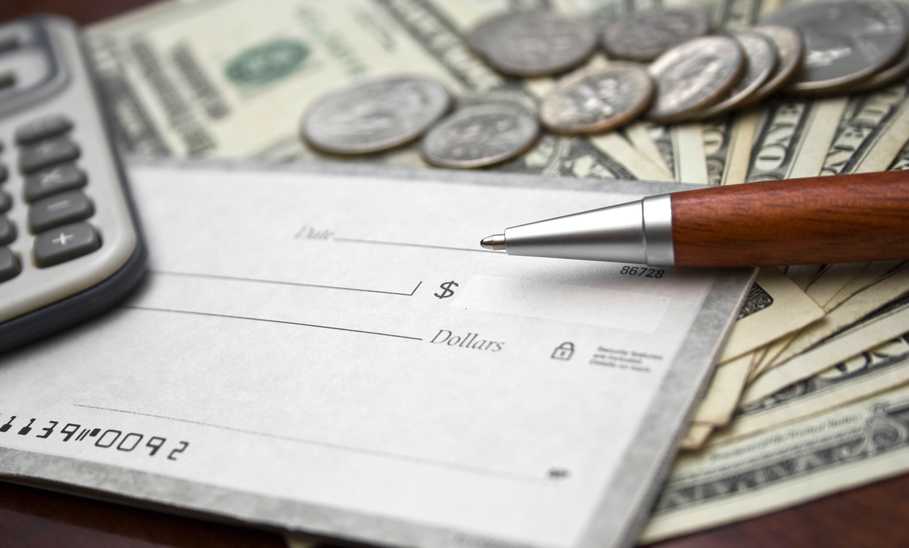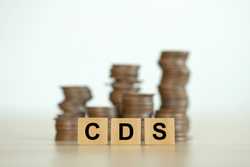How Much Cash to Keep in Your Checking Account (vs. Savings)

Our evaluations and opinions are not influenced by our advertising relationships, but we may earn a commission from our partners’ links. This content is created by TIME Stamped, under TIME’s direction and produced in accordance with TIME’s editorial guidelines and overseen by TIME’s editorial staff. Learn more about it.
Checking accounts are designed to make things like paying bills, sending money to friends and family, and making debit-card purchases easier. The average balance in Americans’ transaction accounts (which include checking) was $41,700, according to the most recent Federal Reserve Survey of Consumer Finances. The median transaction account balance, by comparison, was $5,300. (This means that some wealthy people had very high balances.) When considering checking accounts specifically, a study performed by J.P. Morgan Chase indicates that in 2021, about $3,000 was the average checking account balance for the third quartile of income earners (upper middle class).
There's no specific number to aim for when it comes to how much money to keep in checking versus savings. Taking into account your budget, spending habits, and savings goals can help you to decide how much money to put into either one.
The 50/30/20 rule is a budgeting rule that was popularized by Senator Elizabeth Warren (D-Mass.). It advocates dividing your monthly income into three buckets:
This rule offers a simplified approach to budgeting, since you only have to do a few simple calculations to decide how to divide your income for the month. If you're following the 50/30/20 rule for budgeting, you might keep 80% of your take-home pay in checking and allocate the remaining 20% to savings.
For example, if your after-tax pay is $5,000 per month, $4,000 would go to checking and $1,000 would go to savings. You'd then need to decide how to spend the $4,000 in your checking account on the needs and wants included in your budget.
A checking account is designed to hold the money that you plan to spend, while savings accounts let you set aside money for short- or long-term goals. Both can be an integral part of your financial plan, but you may not keep the same amount of money in checking vs. savings.
A common rule of thumb for how much to keep in checking is one to two months' worth of expenses. If your monthly expenses are $4,000, for instance, you'd want to keep $8,000 in checking.
Keeping one to two months' of expenses in checking can help you to stay ahead of monthly bills. You're also less likely to get stuck with overdraft fees, since you have a buffer in your account.
Maintaining higher balances in checking can put you at a disadvantage if you're not earning any interest on your money. If you have more than two months' of expenses in a basic checking account, you might consider shifting some of that over to savings.
How much money to keep in savings can depend on what purpose the account serves. There's a difference between saving money for emergencies, putting cash aside in sinking funds for a specific purpose, and saving for longer-term goals.
If you're saving for emergencies, financial experts typically recommend saving three to six months' worth of expenses. With sinking funds, the amount you set aside depends on what you're saving for.
For example, if you've set up a sinking fund for new tires, you might keep $800 in that account. On the other hand, a sinking fund for homeowner's insurance premiums might have two to three times that amount. The larger the financial goal, the more money you'll need to add to savings.
An emergency fund is designed to hold money that you can draw on to cover unplanned or unexpected expenses. Examples of financial emergencies include things like:
If you're following the expert recommendation for emergency funds, you'd need to save three to six months' worth of expenses. Using $4,000 as an example again, that would mean keeping $12,000 to $24,000 in savings.
You might decide to aim for nine to 12 months' of expenses instead if you'd like a larger rainy day fund. Or, if you're just getting started with saving, you might build a $1,000 mini emergency fund initially.
At the end of the day, the amount you save for emergencies should be enough to:
Remember, your emergency fund is for true emergencies only. Things like new clothes, dinner out, or a weekend getaway aren't legitimate reasons to take money out of emergency savings.
That amount typically depends on the bank. Some banks can impose maximum limits on the amount you can keep on deposit.
For example, your bank might limit you to keeping $1 million in an individual savings account and $10 million across all accounts. Banks can impose these limits for different reasons. If you're not sure about your bank's policy, a simple phone call or review of your account agreement can shed some light on deposit limits. Note that this number is considerably higher than the $250,000 FDIC coverage limit.
If your bank limits how much cash you can keep in your accounts, you’ll need to allocate it across different banks. That can make tracking your money a little more challenging. The upside is that you can benefit from FDIC protection at each bank with which you have accounts.
The Federal Deposit Insurance Corporation (FDIC) is an independent agency of the United States government that insures deposits at member banks. Specifically, the FDIC protects your deposits in the rare event that a bank fails.
Covered accounts include:
The current FDIC coverage limit is $250,000 per depositor, per ownership category, per financial institution. So if you have checking and savings accounts at multiple banks, each one is FDIC-insured up to that limit. That's a good thing if you tend to maintain higher balances in checking or savings. If you keep large amounts in a bank, including, say, trust accounts, check the specific rules about how much is protected.
Keeping a minimum amount of money in checking at all times is wise because it can help you to avoid banking fees. The fewer fees you pay to the bank, the money you get to keep.
Banks charge a variety of fees for checking accounts, including monthly maintenance fees and overdraft fees. You may be able to waive maintenance fees by meeting a minimum balance requirement. There's also less risk of incurring an overdraft fee if you have a built-in cushion or buffer.
Overdraft fees can quickly add up, as banks can charge more than one fee per day. With the average overdraft fee hovering around $30, that's a good reason to consider keeping a minimum of one to two months' of expenses in checking at all times.
Keeping all your money in your checking account has some notable downsides.
For one thing, if your account is hacked or your debit card is stolen, you could be leaving yourself vulnerable if someone decides to clean out your account. Having some of your money in a separate savings account means you still have funds to cover expenses while you wait on your bank to get issues with your checking account sorted.
Keeping all of your money in checking could also mean that it has less room to grow.
Unless you specifically choose an interest-paying checking account, you're not making any money on your money. Savings accounts, on the other hand, can pay you interest just for keeping your money in the bank.
Online banks can offer more competitive rates to savers compared to traditional banks or credit unions. Here's a quick rundown of some of the top savings options.
CIT Bank Platinum Savings | Discover® Online Savings Account | Quontic High-Yield Savings | |
|---|---|---|---|
| APY* | 4.55% | 3.75% | 4.00% |
| Min. deposit | $100 | $0 | $100 |
| Monthly fee | $0 | $0 | $0 |
| View Offer | View Offer | View Offer |
If you'd like to maintain some of the flexibility that checking accounts offer, you might consider an interest-bearing account. A few of the banks listed above also offer interest checking options.
Axos, for example, has a rewards checking account that earns an impressive APY when certain conditions are met. To earn interest on your checking balance you'll need to enroll in direct deposit and link loan payments or invest accounts to checking. There are no monthly fees and domestic ATM fee reimbursements are unlimited.
Chime's checking account doesn't earn interest but CIT offers a tiered APY for its eChecking account. The higher your balance, the higher the APY. There are no monthly fees or overdraft fees either.
Quontic also offers an interest checking account with a decent rate. You'll need to make qualifying purchases with your debit card each month to qualify, but there's no monthly fee.
Upgrade, meanwhile, doesn't pay interest on checking but you can earn up to 2% cash back with debit card rewards.
Brick-and-mortar banks can sometimes offer interest checking accounts, though you might pay a monthly fee for them. Chase Premier Plus Checking, for instance, lets you earn a modest APY and has a $25 monthly maintenance fee. The Premier account offered by First Citizens Bank also earns interest with a slightly lower monthly fee of $18.
Checking accounts can make managing your financial life easier while savings accounts can help you get closer to your goals. Deciding how much to keep in either one ultimately comes down to what you plan to do with your money.
Choosing a bank account starts with considering which features or benefits you need most. For example, if you want to be able to manage accounts on the go, you might look for a bank that has a robust mobile app. Aside from that, it's important to consider other factors such as:
It's also helpful to consider whether you're comfortable managing your accounts online only. If not, then you might need to choose a traditional bank that has branch locations near you.
There's no rule that says you can't keep large amounts of cash in a bank account or at home for that matter. But doing so can have some downsides if you're not earning any interest on the cash in your checking account or if someone steals the cash that you're keeping in your home.
Depositing excess cash into a high-yield savings account can keep it safe and protected, while allowing you to earn some interest on the balance. You can link a savings account to your checking account to easily transfer money back and forth for convenient access.
The best high-yield checking accounts are typically offered at online banks rather than at traditional banks. Online banks have lower overhead costs and can afford to pass on some of that savings to customers.
When comparing high-yield checking account options, consider the APY that you can earn as well as the fees you'll pay. Also, be on the lookout for any special conditions that apply to earn interest, such as setting up direct deposit or making a certain number of debit card purchases each month.
The information presented here is created by TIME Stamped and overseen by TIME editorial staff. To learn more, see our About Us page.



